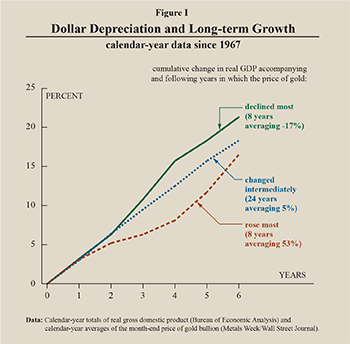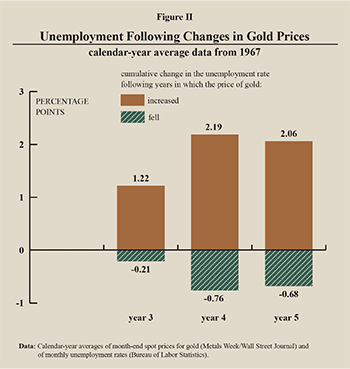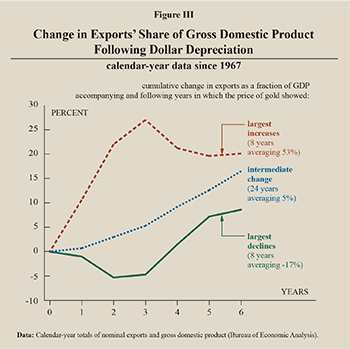The United States and other countries intermittently or persistently pursue currency depreciation – to the point that the phrase “currency wars” is now part of many nations’ vocabularies. Switzerland and Japan remained among the holdouts for many years. But, in the last few years, central banks in both countries have joined the movement.
Since August 2011, the Swiss franc has depreciated by 20 percent from its peak against the euro, and now trades in a narrow range with the euro. In Japan, when Prime Minister Shinzo Abe came to power, he reduced the value of the yen relative to dollar-based currencies by 20 percent in 10 months.
If the foreign-exchange value of a currency falls, the exports of the country appear to be cheaper in other countries, and imports from abroad appear to be more expensive. Cheap currency policies are therefore widely justified as boosting “export-led growth.” This is a politically convenient doctrine. All over the world, large industrial companies are concentrated much more in the export sector than the import sector. Exporters command much more influence in politics and stock markets than the consumers who have to pay higher prices for imported goods. In accord with exporters’ interests, mainstream wisdom asserts that economic policies designed to favor the export sector will benefit the economy as a whole.
Milton Friedman demolished this argument more than 30 years ago:
“Another fallacy seldom contradicted is that exports are good, imports bad. The truth is very different… Exports are the price we pay to get imports. As Adam Smith saw so clearly, the citizens of a nation benefit from getting as large a volume of imports as possible in return for its exports, or equivalently, from exporting as little as possible to pay for its imports.”1
Friedman argued against both export subsidies and import tariffs. His reasoning implies that more successful economies run trade deficits – import more goods and services than they export – in comparison to countries with trade surpluses. He did not necessarily mean that the former grow faster than the latter, only that the former achieve higher standards of living from the same resources. For example, China and other countries have run trade surpluses and still grew rapidly over the past two decades, but Friedman’s point is that if they had run trade deficits instead, their standards of living would have been higher.
Evidence from the United States shows that currency depreciation leads to a temporary boost in exports, but reduced growth in total output. A small part of the boost to the export sector from currency depreciation appears to persist in the long run. But it is achieved only at the expense of slower growth in the economy as a whole.
Impact of Currency Depreciation on U.S. Economic Growth. Those who advocate “export-led growth” often assert that cheap currency policies will increase exports and national output (gross domestic product) over time. However, there is a 40-year history to the contrary since President Richard Nixon ended fixed exchange rates between the dollar and other countries and allowed the dollar to “float.”
The question at issue is not whether currency depreciation benefits the United States relative to other economies, but whether it benefits the U.S. economy in absolute terms. Changes in exchange rates among currencies are signs of relative depreciation or relative appreciation. Economists traditionally measure the dollar’s depreciation in terms of a market basket of foreign currencies. The interpretation of a change in the foreign-exchange value of the dollar is never completely clear. At times the dollar appears to have declined when in fact it simply increased in value less than foreign currencies. At other times it appears to rise, when in fact both the dollar and foreign currencies depreciated.
This ambiguity is avoided by expressing the dollar in terms of gold, a form of money whose real value is historically constant over very long periods of time. The link between changes in the dollar price of gold and changes in foreign exchange rates is strong. Since 1973, gold prices and foreign exchange rates have moved in the same direction 72 percent of the time – 92 percent of the time when the change in the gold price was more than 10 percent. This correlation implies that the gold value of foreign exchange is more stable than the gold value of the dollar. In sum, changes in the gold value of a currency are signs of absolute depreciation or absolute appreciation.

Figure I provides a simple test to determine whether depreciation of the dollar in terms of gold tends to be followed by higher or by lower economic growth. It puts calendar years into three categories according to the degree of change in the price of gold. The categories are the eight years in which gold declined the most; the eight years during which it rose the most; and the 24 years in which its price changed intermediately. For each category, the chart shows the average growth of real GDP in the current and subsequent years. Specifically:
- By the fourth year following weak-dollar years (the red line) GDP grew about 8 percent cumulatively or, on average, 2 percent per year.
- By the fourth year following the strong dollar years (the green line), GDP grew 16 percent or, on average, 4 percent per year.
Clearly, years of dollar weakness (a rise in the gold price) tend to be followed by lower economic growth and years of dollar strength (a fall in the gold price) tend to be followed by higher economic growth. Moreover, given that the economy grows more slowly after the dollar has depreciated, it implies a tendency for reduced growth across all sectors of the economy, including both imports and exports.
The cumulative adverse effect on real GDP peaks at four to five years; then the economy begins to shake off the negative effects.
Impact of Currency Depreciation on U.S. Employment and Unemployment. Currency depreciation over time leads to another unfortunate, but not unexpected, consequence: higher unemployment. The multiyear relationship between the price of gold and the U.S. unemployment rate is confirmed by Figure II:

- Over a four-year period, the weak dollar years (red bars) resulted in an increase in the official unemployment rate averaging 2.19 percentage points.
- The strong dollar years represented by the green bars resulted in a decline in the unemployment rate averaging 0.76 percentage points.
The relationship is not symmetrical, as a fall in the price of gold does not reduce unemployment to the same extent that a rise in the price of gold increases it. As might be expected, it is easier to disrupt a well-functioning economy than it is to return it to normalcy.
Taken together, Figures I and II imply that currency depreciation comes at a high cost to the economy.
Impact of Currency Depreciation on Exports Relative to GDP. Regardless of its effects on the economy, experts widely agree that depreciation of the dollar – at least temporarily – promotes exports. Conversely, exports suffer from a strong dollar. To reconcile this with the effect on GDP, Figure III shows how exports, expressed as a percentage of GDP, respond year by year when there is a change in the price of gold. For each category of annualized change in the price of gold (high, low and intermediate), the figure shows the average change in the exports-GDP ratio subsequent to weak dollar years (red) and strong dollar years (green). The effects of currency change reach their maximum in year 3, showing:
- Weak dollar years resulted in an average increase of about 27 percent in the ratio of exports to GDP.
- Strong dollar years resulted in an average reduction of 5 percent in the ratio of exports to GDP.
- Weak and strong years diverge by as much as 32 percentage points, but after two or three additional years, the divergence narrows to about 10 percentage points.

Thus, Figure III confirms the consequences of currency depreciation for exports. There is a dramatic increase in the ratio of exports to GDP when the price of gold rises substantially, and a corresponding decline when the price of gold falls. The impact reaches its maximum after three years, but the trajectories converge after that. Comparing the degree of divergence at the high point to the change after an additional two years, about two-thirds of the increase in exports due to depreciation is eventually lost.
Recalling Figure I, over the same initial three years, national output (GDP) is reduced. Furthermore, after five years, the residual boost to the exports-GDP ratio decreases, while the cumulative reduction in GDP keeps growing. The numbers suggest that, for each percentage point depreciation in the dollar, the estimated net boost to real exports is about four basis points (0.04 percent) of GDP. That growth appears to be the long-term impact – hardly enough to compensate for the harm done to other sectors of the economy.
Conclusion. Exports are part of the cost side of the economy; imports are the benefit the country gains in return for that cost. Economic policies that promote exports at the expense of imports, such as currency depreciation, reduce the growth of GDP over time. That shift substantially lessens long-term gains in the real value of exports produced by a cheap dollar. Public policy can manipulate the currency and the economy to increase the amount that exports contribute to national output (GDP). But a country that succeeds in this effort has impoverished itself. The phrase “beggar my neighbor” is an understatement.
R. David Ranson is a senior fellow with the National Center for Policy Analysis and president and director of research at H.C. Wainwright & Co. Economics.
Endnotes
1. Milton Friedman and Rose D. Friedman, Free to Choose-A Personal Statement (New York: Harcourt Brace Jovanovich, 1980), page 41.